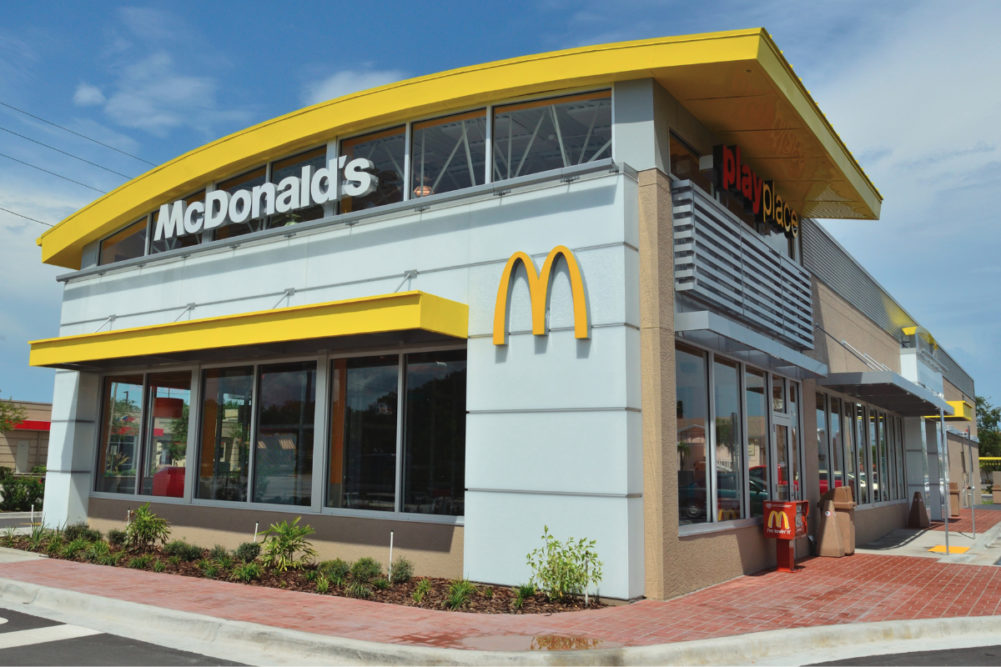CHICAGO — McDonald’s Corp. began the year with good momentum, achieving strong results in January and February, before the coronavirus (COVID-19) pandemic infiltrated the United States, its largest market with more than 14,000 restaurants. Comparable sales at US restaurants increased 8.1% in the first two months, then plummeted by more than 13% in March.
In international operated markets, comparable sales grew 8.5% through February, then nosedived in March, down 35% from the year-ago quarter. On a consolidated basis, global comparable sales declined 3.4% for the quarter, resulting largely from restaurant closings, limited operations and dramatic changes in consumer behavior brought on by the pandemic.
“We’re now operating in a completely different world, and we expect these changes to persist long after the crisis is over,” said Christopher J. Kempczinski, president and chief executive officer, during an April 30 earnings call.
McDonald’s has withdrawn its full-year and long-term outlook due to the uncertainty related to COVID-19’s impact on global economic conditions and business operations.
“This is a challenging and unpredictable time,” Kempczinski said. “Looking at comparable sales, we expect the second quarter as a whole to be significantly worse than what we experienced for the full month of March.”
McDonald’s net income for the first quarter ended March 31 totaled $1.11 billion, equal to $1.47 per share on the common stock, down 17% from $1.33 billion, or $1.72 per share, in the prior-year period. Total revenues decreased 6% to $4.71 billion from $5.02 billion.
“Beginning in mid-March and continuing through mid-April, US comp sales were consistently down about 25%,” said Kevin M. Ozan, chief financial officer. “However, we have begun to see some improvement in the last couple of weeks. We expect April comp sales to be down about 20%.
“Also, over the last several weeks, the US has experienced a significant increase in average check across all channels. This is due to an increase in party size as well as evolving consumer behavior, with daily routines interrupted and fewer transactions at the breakfast daypart.
“Not surprisingly, the US has also seen sales impacted on weekends more than weekdays, as consumers leave their houses only when necessary. And we’ve seen a shift in sales mix by order channel, as nearly all restaurants are operating drive-thru, delivery and takeaway only.”
Consumers are seeking known brands and familiar routines for comfort during this period of uncertainty, a trend that is benefiting McDonald’s, Kempczinski said.
“In China, this was reflected in the response to our recent Big Mac promotion, showed that after a prolonged disruption to their daily lives, customers are craving comfort in our iconic core menu items,” he said. “We’ve also seen this where we’ve been able to safely remain open in cities like Tokyo, Berlin and Chicago and in Northern France, where we slowly began reopening restaurants last week.”
Prior to the pandemic, drive-thru sales accounted for about two-thirds of total US sales. It now accounts for nearly 90%, Ozan said. Several markets, including France, Italy, Spain and the United Kingdom, temporarily closed all restaurants, and other markets, including Australia, Canada and Germany, had drive-thru, delivery and takeaway only or limited hours and menus.
“As we start to really get into the recovery phase, getting back that breakfast business is going to be critical for us,” Kempczinski said. “I think the point we’re trying to make on breakfast is it takes time. It’s a disruption to routines. Reestablishing those routines does take time, but we plan to be very aggressive and make sure that we get back the breakfast business. The breakfast business is a great part of our overall mix, and so we’re going to be putting a lot of effort against that.”


